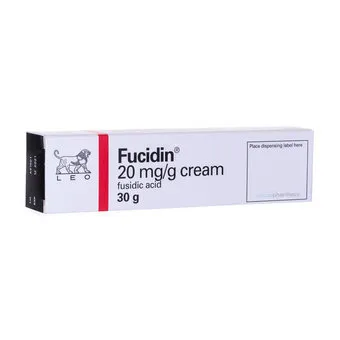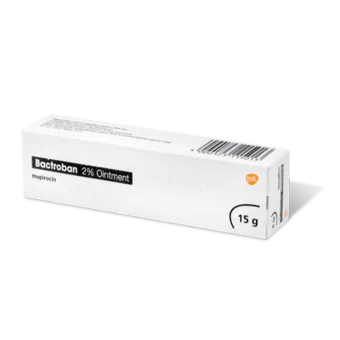Impetigo

More information
Introduction
Impetigo is a common skin condition that usually occurs in young children, although anyone can get it. Impetigo is very contagious, but generally not serious. In the UK, impetigo is the most common skin infection for young people.
The condition dates back to the 14th century, and the name impetigo is derived from the Latin word impetere, which means “to attack”.
Treatments
More information
Once an online consultation has been been approved by our medical team, our pharmacy will safely prepare and ship your treatment to you in discreet packaging using Royal Mail or DPD.
What Is Impetigo?
Impetigo happens when bacteria such as Streptococcus pyogenes or Staphylococcus aureus infect the epidermis (outer skin layers). The areas of the body affected most often by impetigo are the face, the arms and the legs.
Children are more likely to get impetigo than adults, particularly those between the ages of 2 and 5. The infection can start in insect bites or cuts (secondary impetigo) but can also develop on healthy skin (primary impetigo).
Impetigo Symptoms
There are several impetigo symptoms to look out for, including red sores, blisters and crusty patches. We will come onto the various stages of impetigo later on this page. There are three types of impetigo:
- Nonbullous impetigo - the most common type in adults, characterised by thick crusts that are honey-coloured
- Bullous impetigo – a form of impetigo that causes big blisters
- Ecthyma – a more serious type of impetigo that typically results from impetigo which has gone untreated. This type causes ulcerative sores that are entrenched into the skin’s deeper layers
Impetigo can develop anywhere but is more likely to occur in exposed areas such as the face and hands.
What Causes Impetigo?
Impetigo is caused by one, or both, of two types of bacteria; Streptococcus pyogenes and Staphylococcus aureus. These bacteria can enter the body via a break in the skin from a scratch, cut or bite, allowing them to colonise. Impetigo is contagious, and you may catch it by touching sores on the body of a person who has the infection. You could also catch impetigo by touching the clothes, sheets or towels that an infected person uses.
Staphylococcus aureus bacteria can be carried inside the nose, and then cause an impetigo infection if it spreads to the person’s skin. But because Streptococcus pyogenes or Staphylococcus aureus are common, coming into contact with them doesn’t necessarily mean you will catch impetigo.
You may be at a higher risk of impetigo if you:
- Have diabetes
- Have a weak immune system
- Live in a humid climate
- Are undergoing dialysis for kidney problems
- Have a skin condition
- Have sunburn
- Play sports that involve physical contact
- Have insect bites
- Have an infection that causes itching (such as chickenpox or lice)
Stages of Impetigo
Each type of impetigo – nonbullous, bullous and ecthyma – goes through several stages:
Nonbullous impetigo: usually begins with itchy, red sores around the lower part of the face. When these sores break open, the skin around them becomes irritated and red. A crust that is brown or yellow coloured then forms. After the crust heals, reddish spots are left behind. These eventually fade and don’t leave scars.
Bullous impetigo: causes bigger blisters that can be filled with fluid (bullae). This liquid is typically clear but may become cloudy. The blisters form on unbroken skin and aren’t surrounded by red patches. In the next stage, the blisters weaken and burst open before a crusty sore develops over the area where they have broken. After they heal, these blisters don’t usually leave behind scars.
Ecthyma: is less common than the two types of impetigo described above, and more serious. It can happen when impetigo hasn’t been treated. The early stage of the infection involves the formation of painful blisters on the skin. These blisters usually develop on the lower half of the body and become pus-filled, crusted sores. The skin around these sores can turn red. The sores from ecthyma heal gradually and could leave scars.
How Long Does Impetigo Last?
The more common forms of impetigo can get better within seven to ten days with treatment. Ecthyma can resolve within ten days with treatment, but the sores take longer to heal.
Impetigo vs Cold Sores
Cold sores are a symptom of the herpes simplex virus (HSV). It is estimated that 67% of the world’s population aged under 50 have HSV-1.
Both impetigo and HSV-1 (the type of herpes that causes cold sores) are contagious, and in some cases (especially with nonbullous impetigo), it is difficult to tell the two infections apart.
When blisters form a large cluster and burst quickly, this is an indication of impetigo. If a sore develops around the mouth or lips and forms a fluid-filled blister that pops and scabs over, this could be a cold sore. Ask your doctor if you are not sure whether you have impetigo or cold sores.
Impetigo Treatment
Impetigo is usually diagnosed visually by your doctor, without the need for any laboratory tests. You are likely to be prescribed antibiotic treatment, such as Fucidin Cream or Bactroban (Mupirocin), which should clear the infection. If an antibiotic hasn’t worked, the type of bacteria that caused the infection may have become resistant to it. In these cases, a doctor may take a sample of the fluid from a sore to see which antibiotic is likely to work best. You should note that some antibiotic treatments for impetigo are prescription-only and cannot be bought over the counter in the UK.
There are several ways in which you can help to prevent impetigo from spreading. These hygiene steps include:
- Covering any wounds or bites to protect against infection
- Washing your hands regularly to minimise skin bacteria
- Changing your bed sheets and towels regularly
- Keeping your nails trimmed and clean
- Disinfecting surfaces and toys
- Not sharing items with somebody who has impetigo
You can buy Impetigo treatments online at Cloud Pharmacy. After a consultation with our online pharmacist, we can confirm your suitability and prescribe your prescription promptly, before shipping your medication via our discreet, next-day delivery service.
Guides
How it works
First...
Complete a quick eligibility check
Then...
Order your treatment
Finally.
Fast, confidential delivery to your door





















